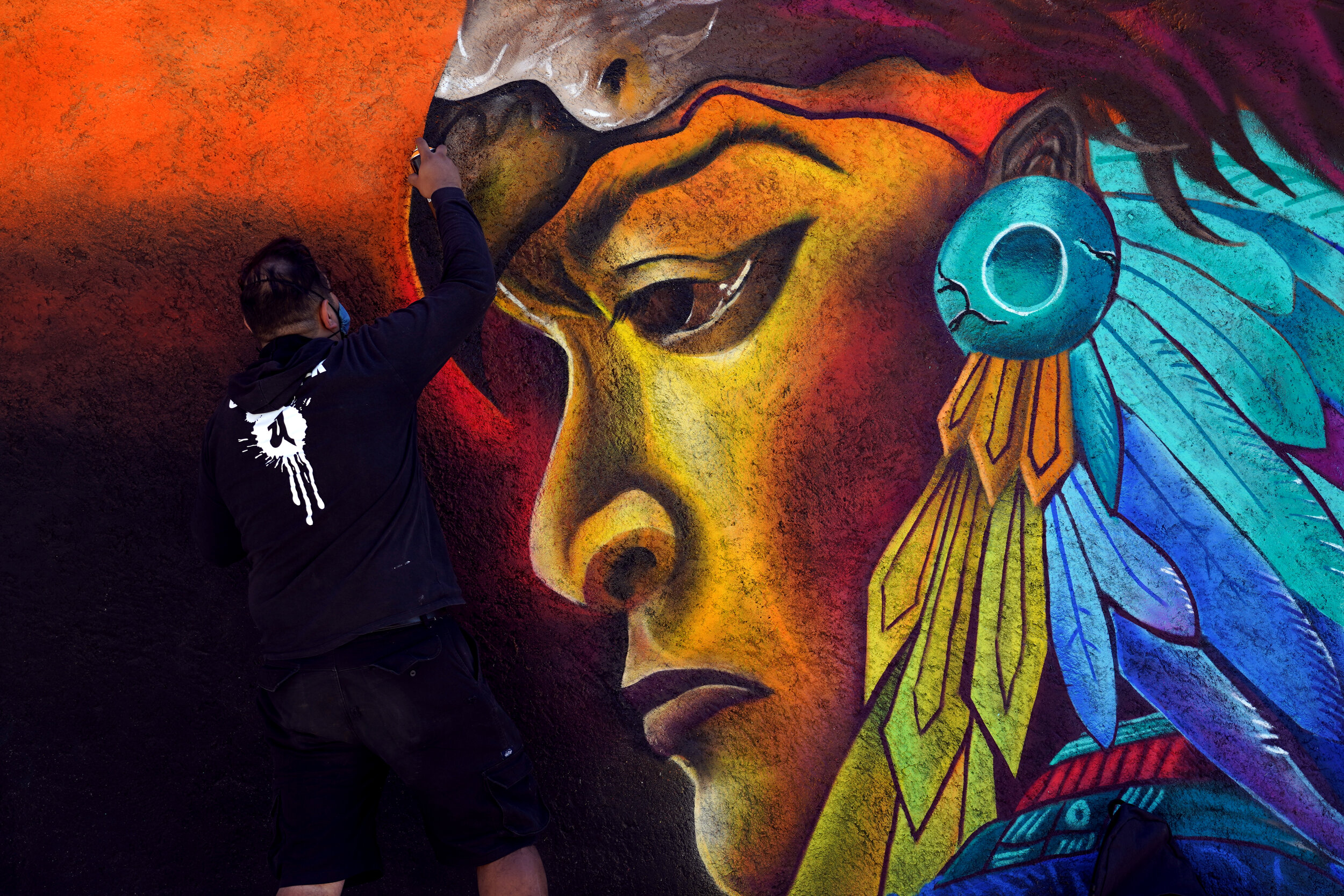
MEXICAN STREET ART
Reading Between the Lines of Mexico’s Incredible Street Murals
Mexican Street Art
Mexican street art’s origins are not found in the subcultures of New York or London, but rather from homegrown Mexican muralism starting in the 1920s. These murals were painted on public buildings generally with social, national and political messages as part of efforts to reunify the country under the post-Mexican Revolution government. Today’s street art continues with this tradition, but with a twist. Rather than painting only a unified version of what Mexican identity is, artists paint from their neighbourhoods; they showcase local traditions, ethnic identity, native history, women’s rights, and traditional patterns.
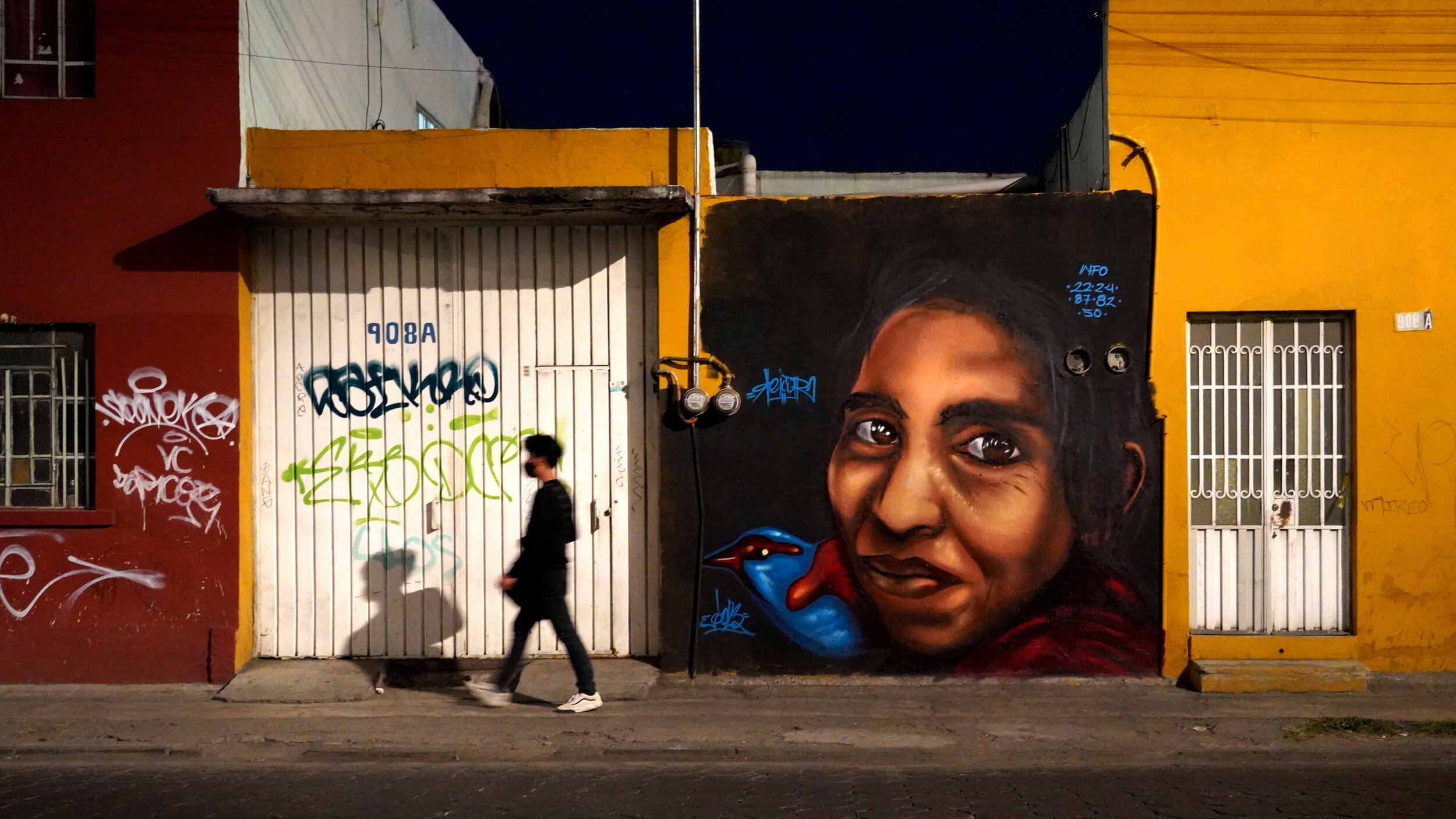
Nahua Eyes
Ciudad de Puebla, Puebla, Mexico. January 2021.
A young man walks past closed storefronts in the early evening in a southern district in Puebla City. The state of Puebla, just a couple of hours outside Mexico City, is home to the largest populations of Nahua people in Mexico. They speak the Nahuatl language, descended from ancient Aztec. Native rights and culture feature prominently on street art here, as well as versions of Aztec history and mother nature.

Motorcycles and Conquest
Ciudad de Puebla, Puebla, Mexico. January 2021.
Motorcycles are parked in front of a modern take on a historical mural in downtown Puebla City. The scene combines punk. and hipster elements with old Spanish and Mexican historical figures and the red motorcycle fits in perfectly with the murals. I’m not entirely sure, but the figure on the right appears to be a younger, hipster-looking version of Hernán Cortés, the Spanish conquistador who laid siege to the Aztecs and later has the last emperor Cuauhtémoc executed. After that incident, it was reported that Cortés felt so guilty over the unjust execution that he suffered from continuous insomnia. His legacy, like so many others, is very controversial, lying somewhere between a ruthless, brutal murderer and an honourable explorer.
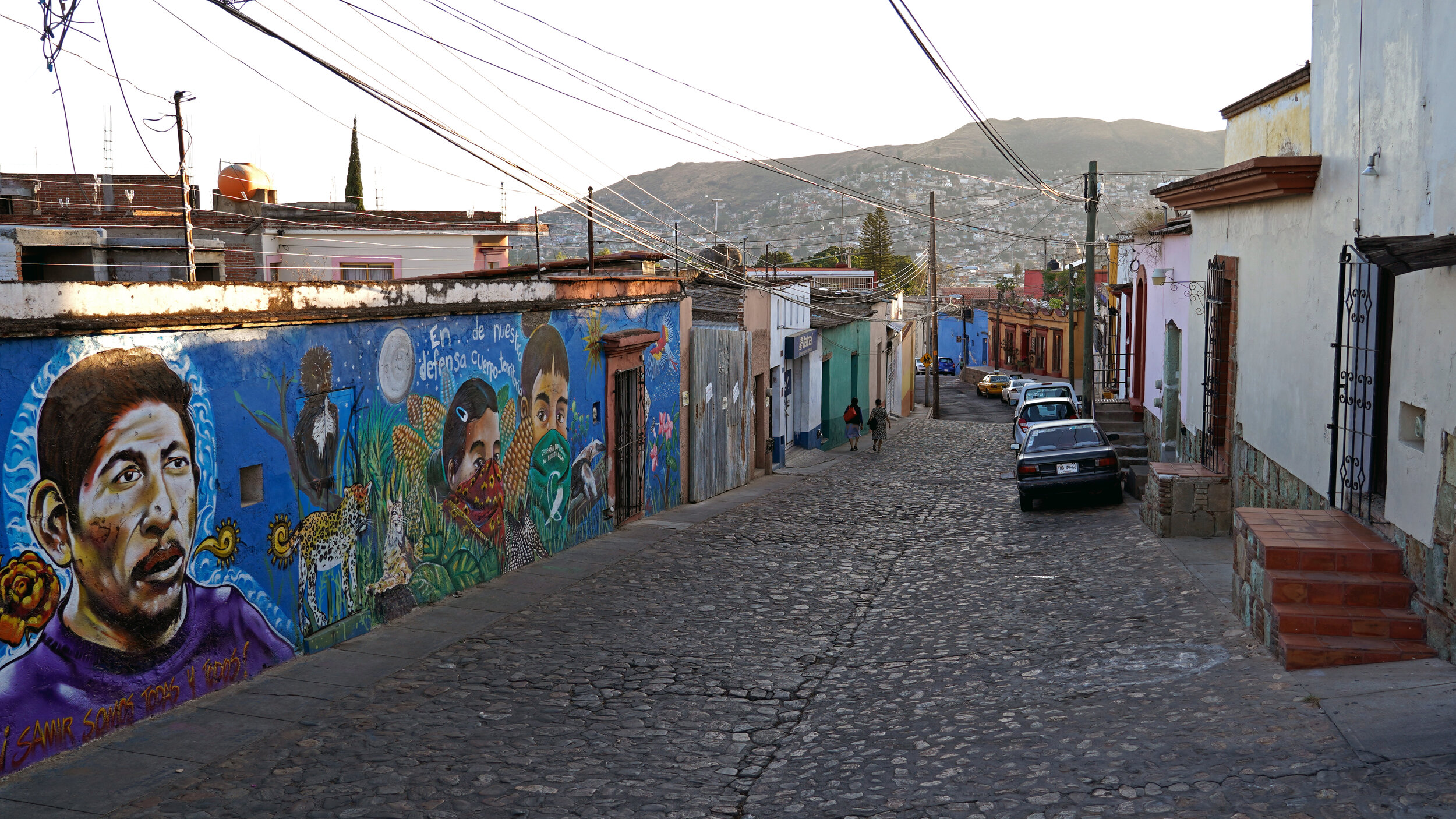
Body-Territory Defence
Oaxaca de Juárez, Oaxaca, Mexico. December 2020.
This street art mural in the outskirts of the city promotes native rights over their bodies and land. Oaxaca, in southern Mexico, is home to many different indigenous groups and is also one of the most impoverished states in Mexico. There are ongoing community and socialist movements in the state, in support of native land rights and women’s rights. The face on the left is that of Samir Flores Soberanes, an ethnic Nahua native land rights activist from Morelos who was assassinated in front of his home in 2019. The right side of the mural depicts two indigenous children surrounded by corn, the staple of the Mexican farmer, and native flora and fauna to southern Mexico. Above them reads: “Of our body-territory defence.”
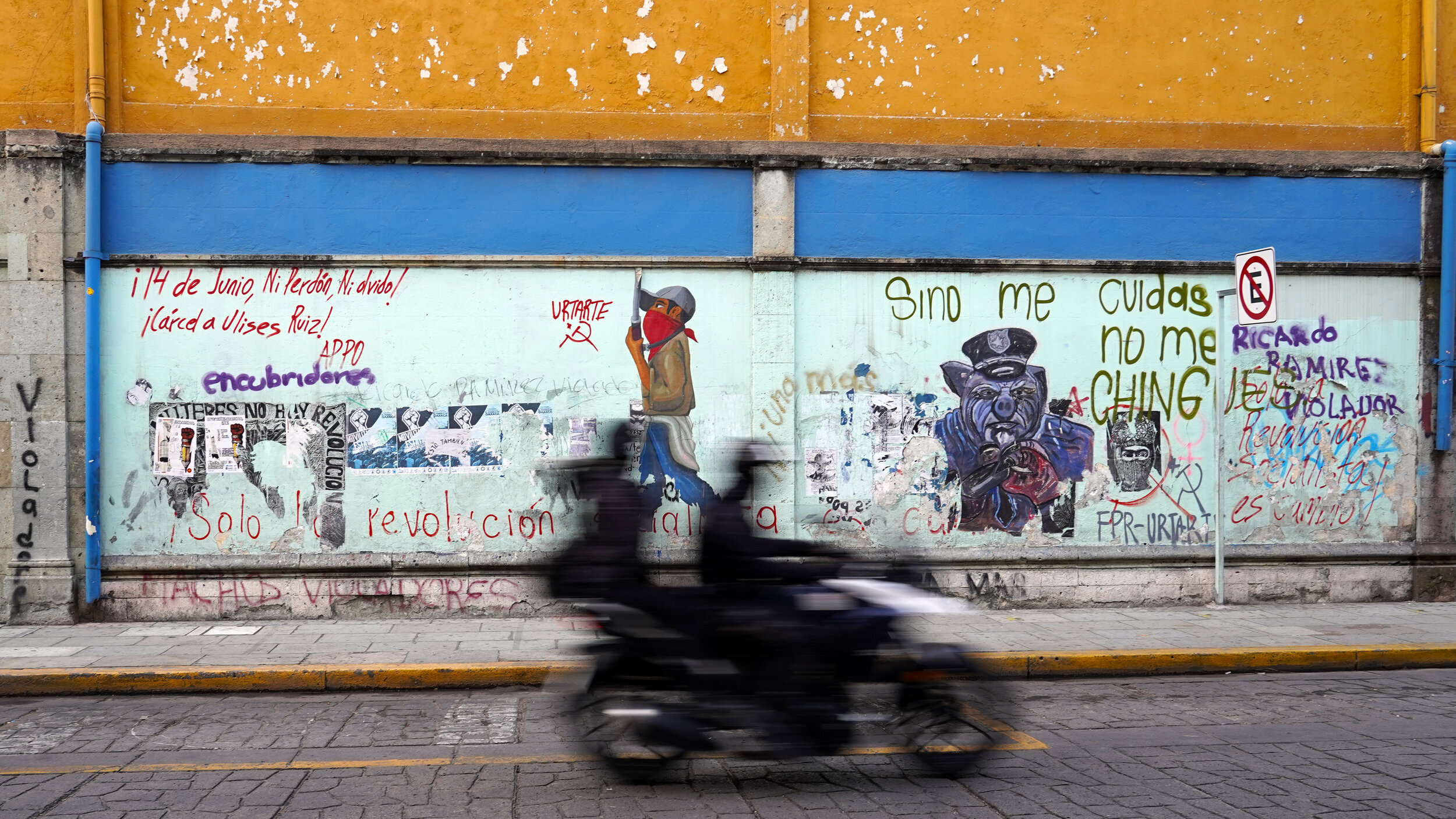
Wall of Revolution and Justice
Oaxaca de Juárez, Oaxaca, Mexico. December, 2020.
A socialist revolutionary mural lines a street in downtown Oaxaca city. There’s a lot going on here. In addition to party slogans for the communist-socialist FPR-URTARTE that read “only the socialist revolution is change,” there are several more direct accusations against the police and a suspected rapist. Words like “cover-up,” “not one more,” “jail for Ulises Ruiz,” and “Ricardo Ramirez is a rapist” appear in clear form on the wall. You can also see a picture of Subcomandante Marcos from the Zapatista movement, as well as a pig dressed as a police officer under the text: “If you don't take care of me, just don't fuck me.”


Lady of the Dead
Oaxaca de Juárez, Oaxaca, Mexico. December, 2020.
Left: A young family sits next to a day of the dead painting on a heart in Oaxaca’s main zócalo (square). Wearing their N95 masks as mandated by law in public during the 2020 COVID pandemic, people still were going about their daily lives as best as they could.
Right: A close up on the detailed painting work by local artist Noel Gómez Lorenzo.

Eyes and Teeth
San Cristóbal de las Casas, Chiapas, Mexico. January 2021.
Intricate patterns line this wall painting in the city of San Cristobal in the southern Mexican state of Chiapas. Fish, eels, snakes, skills, and faces can be found throughout this artistic expression.
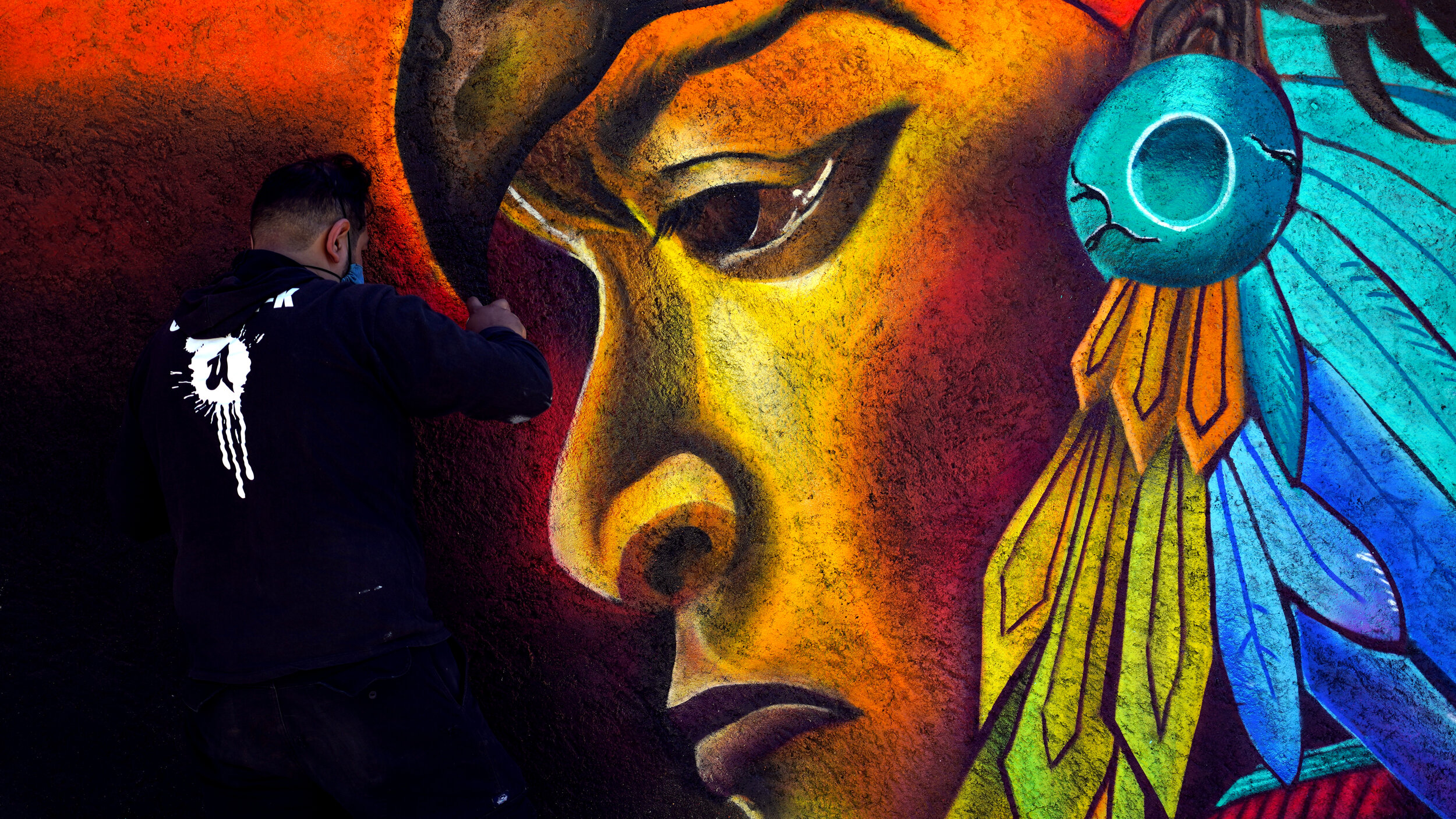
The Face of Cuauhtémoc
Cholula, Puebla, Mexico. January 2021.
A street artist works on a new mural in the town of Cholula in central Mexico’s Puebla state. Cholula, located near the Popocatepetl volcano, is a hub for many of the surrounding Nahua villages. The Nahua people are direct descendants of the ancient Aztecs and many still speak the Nahuatl language. The imagery in this mural depicts Cuauhtémoc, the last Aztec Emperor. The name Cuauhtémoc means "one who has descended like an eagle," hence the eagle headdress. Cuauhtémoc took the throne amidst his capital being besieged by Spanish conquistadors and was later executed by Hernan Cortés. He is the embodiment of indigenous nationalism in Mexico.
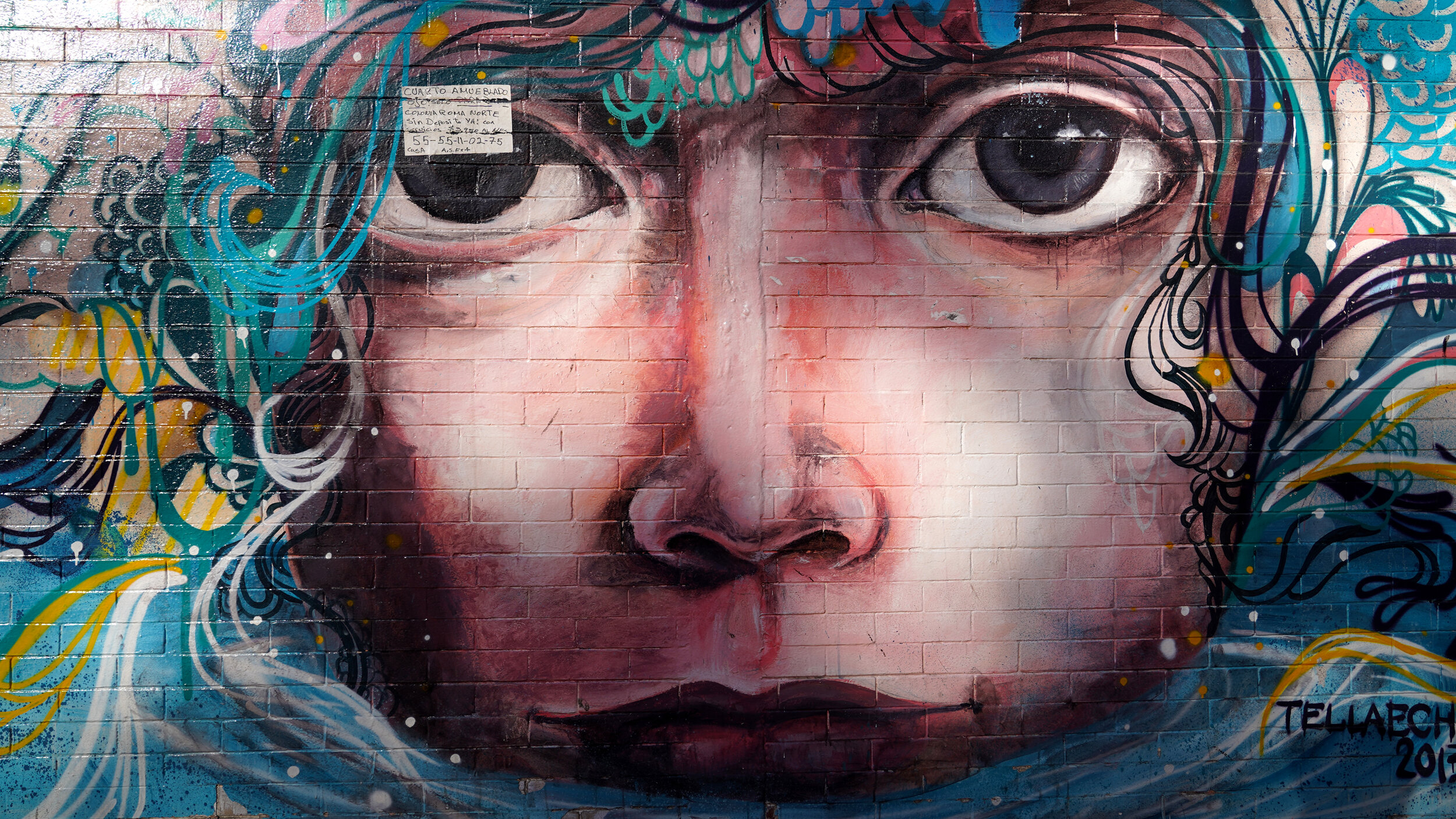
Soft Eyes of Roma Norte
Mexico City, Mexico. February 2021.
Located in the trendy, tree-lined neighbourhood of Roma Norte in Cuauhtemoc (central Mexico City), these innocent looking eyes decorate the entrance to a kindergarten. This painting is the work of Mexican muralist Jorge Tellaeche, who began his career at age fifteen. His work has a strong focus on social responsibility and can be found in bits and places across the city.
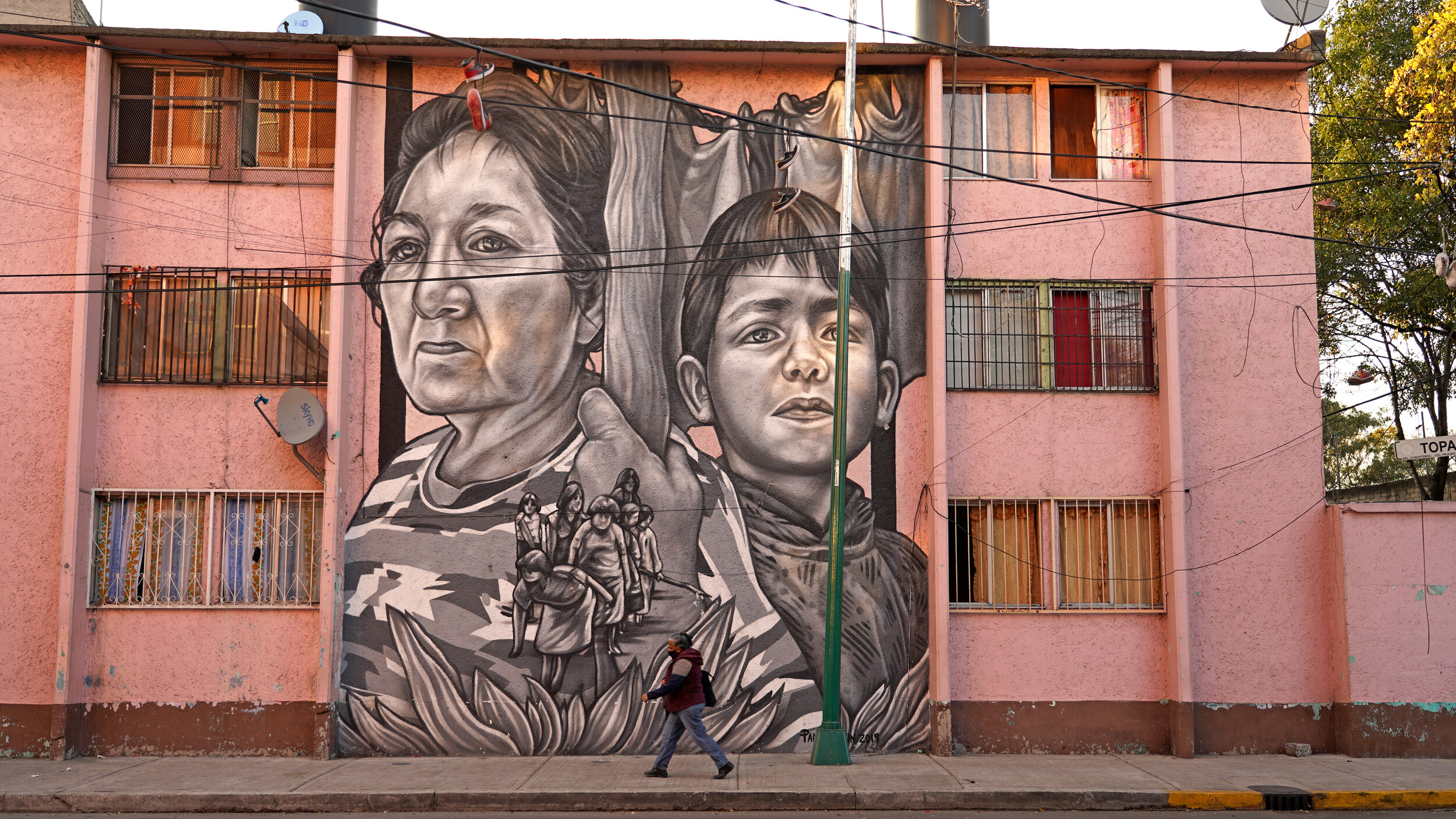
The Powerful Women of Mexico
Mexico City, Mexico. February 2021.
Deep within the urban sprawl of Mexico City lies the Colonia Paulino Navarro neighbourhood. This working-class residential area is home to some of the most fantastic street murals in the city. Gritty, noisy and full of character, this area has a perfect blend of local life and art, intertwined and playing off one another. This mural in particular, by famous Mexican artist Paola Delfín, highlights Mexican women. Paola is known for featuring women and children in her work.
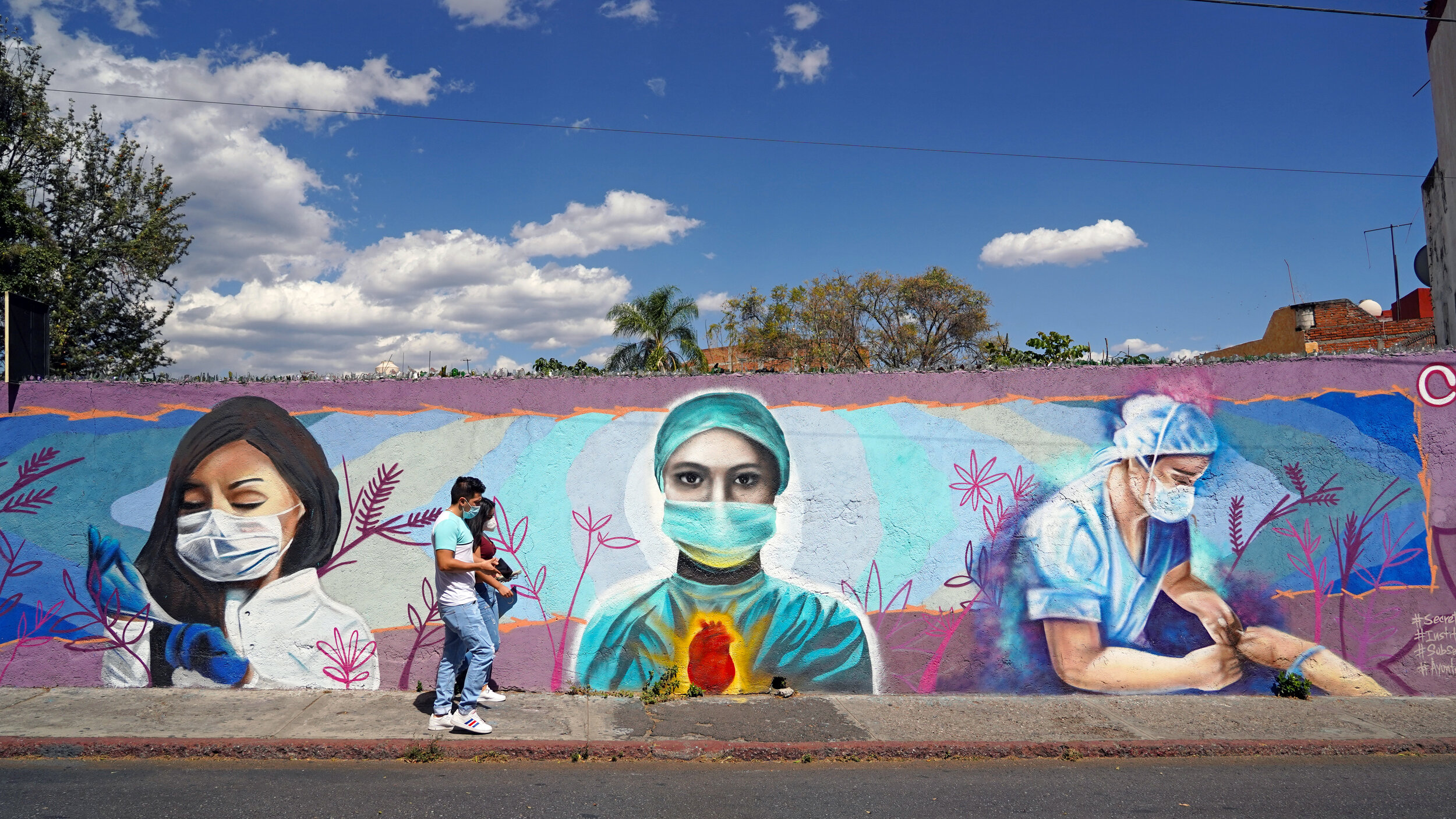
Honouring Front Line Workers
Cuernavaca, Morelos, Mexico. February 2021.
A beautiful mural featuring three medical professionals in surgical masks in downtown Cuernavaca, Morelos pays homage to the doctors, nurses and others on the front lines in the fight against COVID-19.
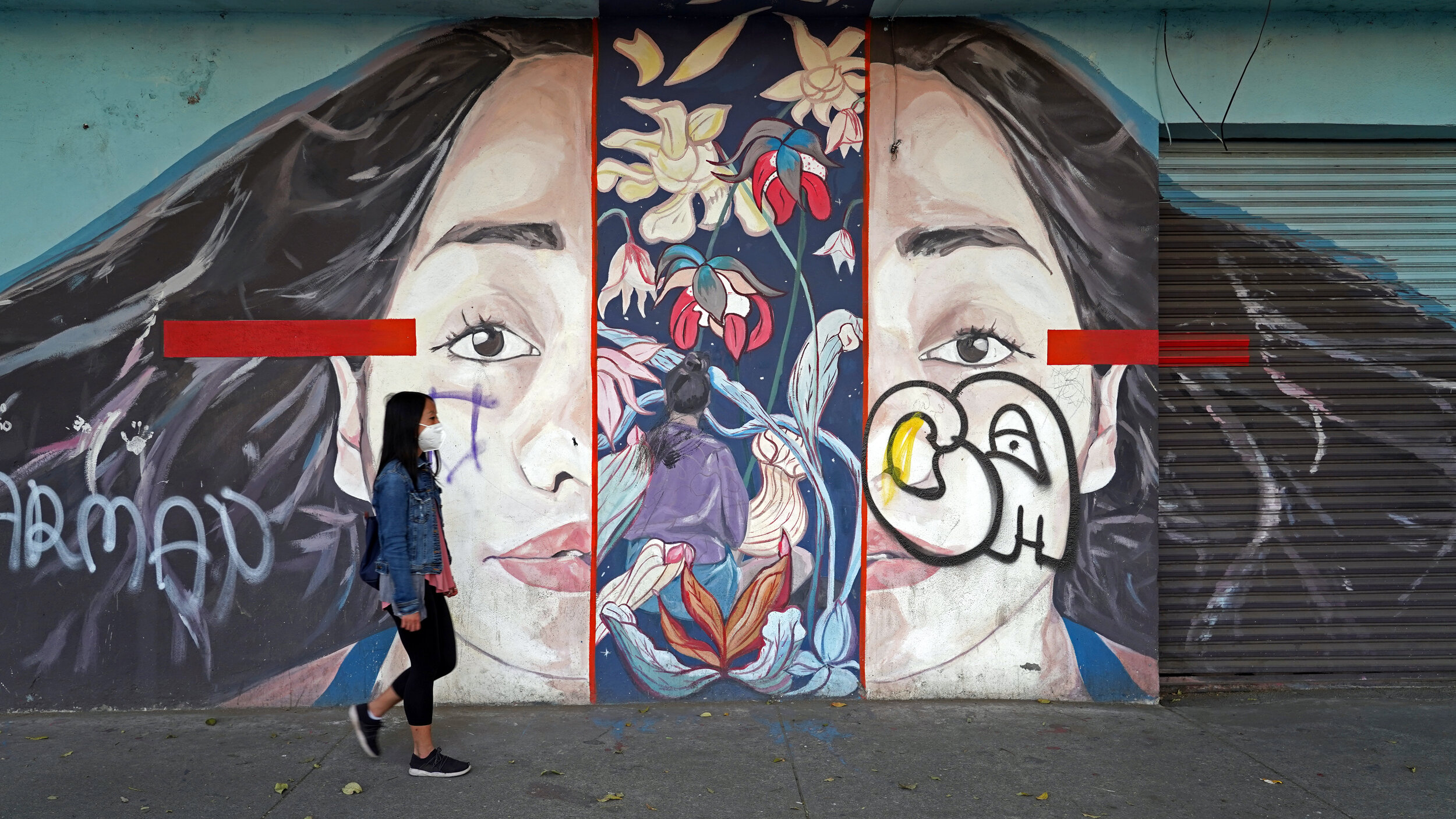
The Beauty Within
Mexico City, Mexico. February 2021.
Deep within the urban sprawl of Mexico City lies the Colonia Paulino Navarro neighbourhood. This working-class residential area is home to some of the most fantastic street murals in the city. Gritty, noisy and full of character, this area has a perfect blend of local life and art, intertwined and playing off one another. This mural is on a main street, and while it has been defaced by graffiti, it remains beautiful and full of character, reminiscent of the neighbourhood itself.
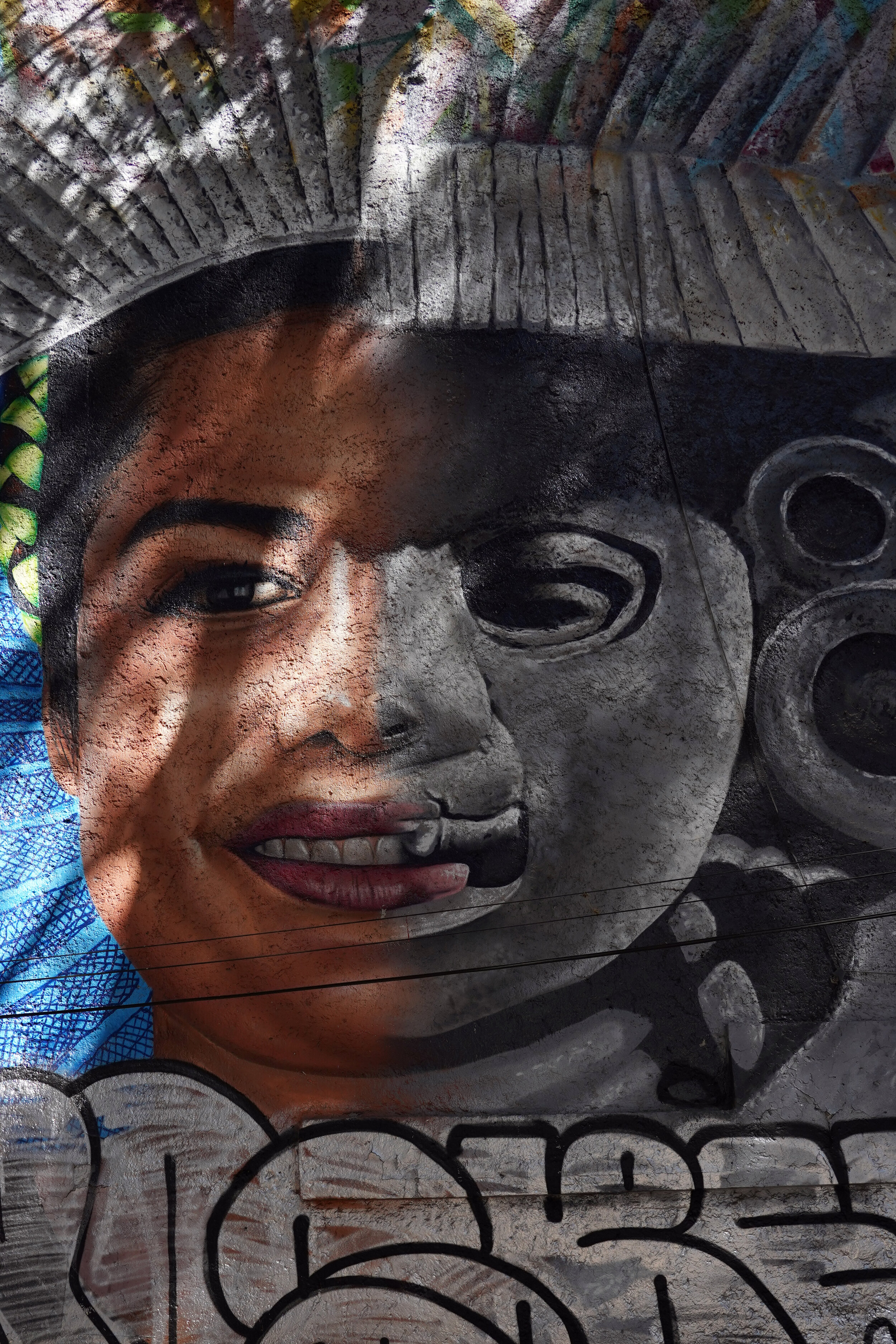


Our Mexican Faces
Mexico City, Mexico. February 2021.
Throughout working-class neighbourhoods in Mexico City, murals that celebrate native people, practices, and customs are common. Part of the connection these artists seek to draw is between the people and Mexico’s past pre-colonial history, as well as native land traditions, stretching from agriculture and food production to landscapes.
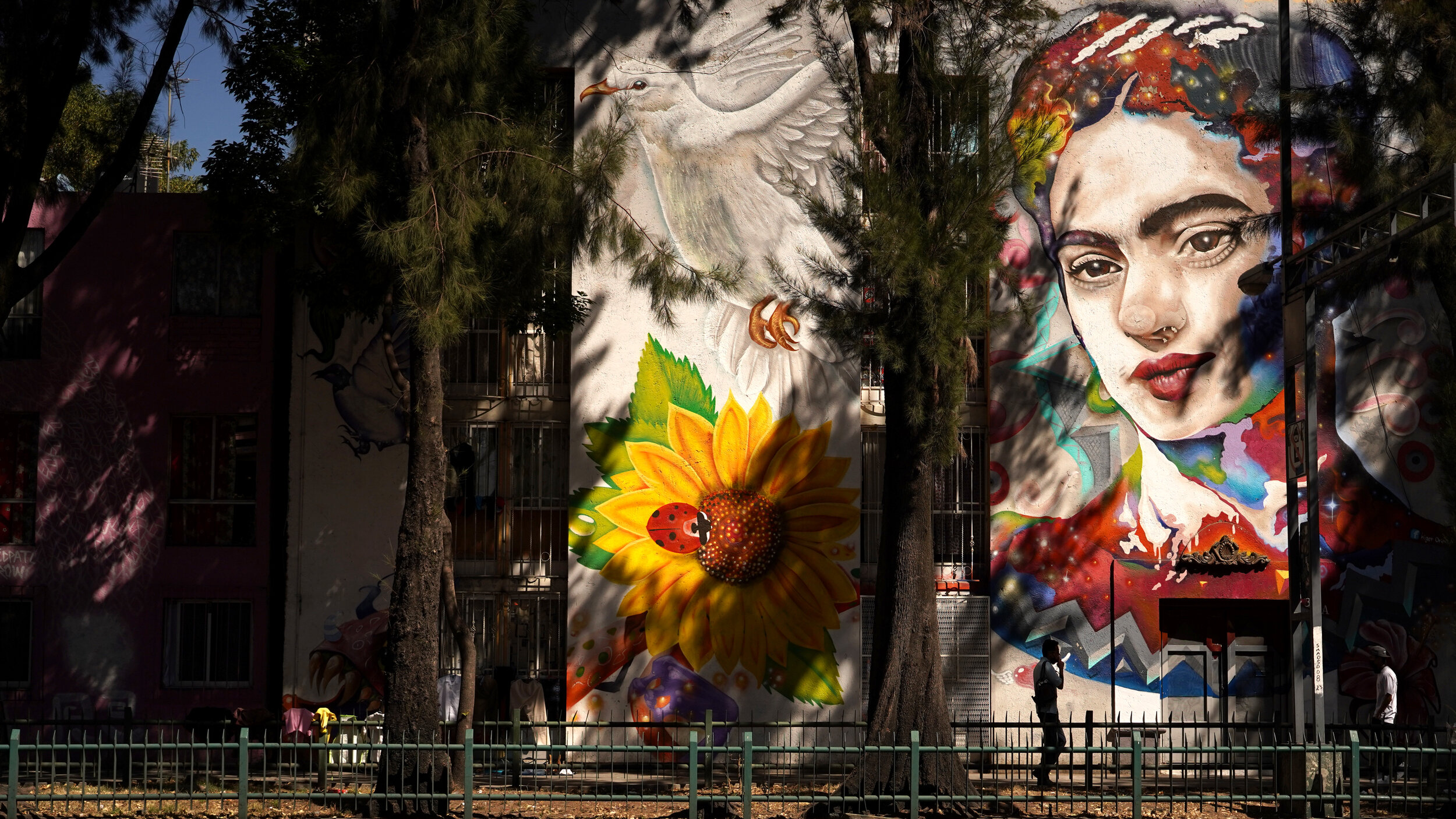
Frida in Colour
Mexico City, Mexico. February 2021.
Mexican painter, thinker and activist Frida Kahlo was born and raised in Mexico City’s southern Coyoacán District. Her image features prominently across Mexico today. While her work as an artist remained relatively unknown until the late 1970s, by the early 1990s she had become not only a recognized figure in art but also regarded as an icon for Mexican culture, the feminism movement and the LGBTQ+ movement. Kahlo's work has been celebrated internationally as emblematic of Mexican national and indigenous traditions and by feminists for what is seen as its uncompromising depiction of the female experience and form.


The Women of Mexico
Tepoztlán, Morelos, Mexico. February 2021.
Powerful, beautiful women along with native designs and colours adorn many walls across the country. These two images from the small town of Tepoztlán in Morelos state feature powerful women. On the left is Frida Kahlo in black and white, as if taken from an old photography. And on the right is an indigenous Nahua woman with nature and native Aztec jewelry adorning her face, showing the connection between the people and the land— mother earth personified.

The Land of the Monarchs
Angangueo, Michoacán, Mexico. February 2021.
The pueblo mágico of Angangueo is located within the Monarch Reserve in the eastern part of Michoacán. Every year from November to March, millions of monarch butterflies migrate to these high altitude fir tree forests to breed. It is not a stretch to say butterflies put food on the tables in Angangueo and the surrounding towns, as butterfly tourism is the number one activity fuelling these rural economies. The town hosts over 100,000 people per year to see the migrating butterflies.

Eyes of Age
Mexico City, Mexico. February 2021.
This mural in Mexico City’s Colonia Buenavista neighbourhood features a native women, with her eyes looking out onto the streets.
